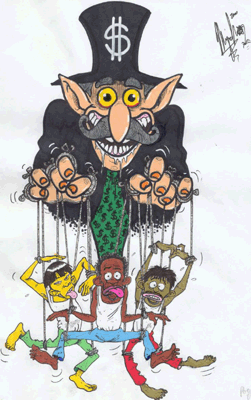This Blog-post is a response to a thinking activity on the Wide Saragossa Sea given by our professor Madam Yesha Bhatt.
What is a Post-Colonial Study?
According to M.H.Abrahms, studies:
The critical analysis of the history, culture, literature, and modes of discourse that are specific to the former colonies of England, Spain, France, and other European imperial powers. These studies have focused especially on the Third World countries in Africa, Asia, the Caribbean islands, and South America. Some scholars, however, extend the scope of such analyses also to the discourse and cultural productions of countries such as Australia, Canada, and New Zealand, which achieved independence much earlier than the Third World countries. Postcolonial studies sometimes also encompass aspects of British literature in the eighteenth and nineteenth centuries, viewed through a perspective that reveals the ways in which the social and economic life represented in that literature was tacitly underwritten by colonial exploitation.
There are three ways to study postcolonialism,
1. Cultural
2. Political
3. Economical Legacy
The postcolonial study also studies female perspectives parallel with all discourses. In Wide Saragossa Sea, Jean Rhys mentions female discourse with a postcolonial aspect.
About the Novel:
The novel serves as a feminist prequel to Charlotte Brontë's novel Jane Eyre (1847). In this responded novel, Rhys presents the harsh reality behind the character of Bertha who is known as Antoinette (Bertha’s much more elegant real name). Rhys portrays her character as a heavily symbolic 'madwoman in the attic. Also explores Victorian paternalism, sexualized racism, and the complex social and political history of the West Indies.
Postcolonialism: Postcolonial response to Jane Eyre:
From looking at the character of Annette and her husband Mr.Mason, we find that he dismisses everything that Annette said, this is what might Rhys gives the preview of Mr.Rochester and Antoinette's marriage life also. Describing the story from the past of Antoinette's mother itself proves the strong response to Jane Eyre as a postcolonial aspect, especially with feminist perspactive.
Another event about the burning castle. This burning castle was also used by Bronte in her novel Jane Eyre. In response to burning the home of Rochester at the very end of the novel, perhaps Rhyn used this burning of the house at the start of the novel in a certain way. But the change is that both humans are different. In Rhys's novel, the black people burn the home and in Jane Eyre Antoinette herself burns the attic. So by using the fire but with different peoples, Rhys very systematically gives the response to Jane Eyre.
The wide Sargasso Sea psychologically vindicates Antoinette and Annette, demonstrating their intelligence, powerful emotions, personal seriousness and correct instincts. But these traits are not enough to save them. Rochester exploits Antoinette financially, uses her physically, manipulates her emotionally, betrays her sexually, tortures her psychologically and incarcerates her bodily until she commits violent suicide. He enjoys the sympathetic ministrations of his devoted servant-wife Jane Eyre for the rest of his life. (This Paragraph conducted from this Article)

















